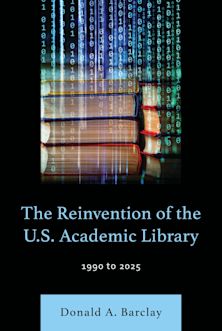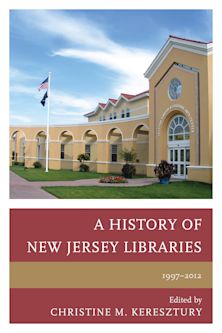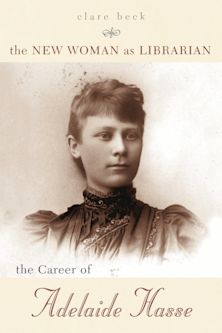- Home
- ACADEMIC
- Library & Information Science
- History of Books, Publishing, and Librarianship
- A Social History of Books and Libraries from Cuneiform to Bytes
A Social History of Books and Libraries from Cuneiform to Bytes
You must sign in to add this item to your wishlist. Please sign in or create an account
Description
While the importance of writing has often been recognized, the role of books and especially that of libraries has just as often been slighted. Knowledge, once generated, has to be communicated, preserved, and accessible. Books in their varying formats—from clay tablets to scrolls and manuscripts to pixels—have been instrumental in spreading knowledge, although relatively little attention has been given to the story of books themselves.
A Social History of Books and Libraries from Cuneiform to Bytes traces the roles of books and libraries throughout recorded history and explores their social and cultural importance within differing societies and changing times. It presents the history of books from clay tablets to e-books and the history of libraries, whether built of bricks or bytes. Following an introduction that sets the theoretical basis for the historical importance of books and libraries, chapters alternate between the history of the book and the history of libraries. Included within the chapters are short excursions on some particular development, such as book emblems or cataloging. Case studies are given as thematic illustrations of libraries everywhere.
Patrick M. Valentine argues that social and cultural forces have been more influential in determining the nature and status of information, books, and libraries than has technology. But A Social History of Books and Libraries is far from a jeremiad against technology; rather it presents history within the subtle yet shifting context of time and place. Although written primarily for librarians and library students, it will also be of interest to a wider audience of scholars and those interested in books, libraries, and cultural history.
Table of Contents
Introduction: Written Information and Beyond
Chapter I: Early Books: Beginnings to circa 1450
A. Origins of Information Media and Materials
B. Writing and Its Effects
Interlude: Book Emblems
C. Book Formats
D. Manuscripts and Copying
Chapter II: Early Libraries: Beginnings to circa 1500
A. Ancient Libraries
B. Medieval European Libraries
Interlude: Early Cataloging
C. African, Asian and Pre-Columbian Libraries
Chapter III: Books and Printing: 15th – 19th Centuries
A. Early Printing and the Invention of Moveable Type
B. Printing and Repeatable Messages
Interlude: Woodcuts
C. Spread of Printing and Incunabula
Chapter IV: Libraries Renaissance & Beyond
A. European Libraries Renaissance to the Enlightenment
B. Modern European Libraries
Interlude: Censorship
C. Libraries Outside Europe
Chapter V: Modern Printing & Computers
A. Print in the 19th and 20th Centuries
B. Electronics in Communications
Interlude: Print Nationalism
C. Computers and Books
Chapter VI: American Libraries
A. American Libraries to World War I
B. American Libraries after World War I
Interlude: Burning Books
C. Computers in American Libraries
Bibliography
Index
Product details
| Published | 27 Sep 2012 |
|---|---|
| Format | Ebook (Epub & Mobi) |
| Edition | 1st |
| Extent | 222 |
| ISBN | 9780810885714 |
| Imprint | Scarecrow Press |
| Illustrations | 11 b/w photos |
| Publisher | Bloomsbury Publishing |
About the contributors
Reviews
-
Valentine (East Carolina Univ.) here presents a comprehensive survey of book history and library history from their beginnings to the modern day. Libraries have changed and developed a great deal since ancient times, when most libraries were owned by the wealthy, and relatively few people had access to them. One overriding theme of this volume is how libraries have slowly but steadily become more accessible to the larger, nonelite public. Valentine also discusses the impact of library technological innovations such as the card catalog; it exemplifies something that may seem quaint now, but was a great improvement on older, printed catalogs of books....The last third of the book, which focuses on more modern developments in books, information, and American libraries, is more engaging than previous sections. This volume likely will be most useful to library students and advanced undergraduates in specialized courses. Additionally, library professionals and researchers in related fields may find it helpful. A bibliography is included for those who want to follow up in greater depth. Summing Up: Recommended. Upper-level undergraduates and above, especially in library science.
Choice Reviews
-
Patrick Valentine is an assistant professor in library science, and this book has emerged from a course that he has taught for several years. It covers printing and library history from their beginnings to the present day. . . It is a competent, concise, easily followed account, well suited to its purpose as an academic text.
The Australian Library Journal
-
Students of book and library history will find Valentine’s study an indispensible guide that examines how social forces shaped the production and dissemination of written text. . . .[S]tudents will appreciate the first three chapters of Valentine’s book, which provide a foundational overview of early approaches to writing and preserving written information. . . .Readers will find the fourth chapter valuable for its treatment of popular public libraries in England and across the European continent. . . .Additionally, readers will find Valentine’s historical account of public as well as college and university libraries valuable for what it may tell us about the impact of culture on how information is preserved and accessed. Finally, scholars and students alike not only will benefit greatly from Valentine’s thorough and well-written book, but they will find the extensive bibliography similarly useful for further study.
Information & Culture
-
As his title suggests, Patrick Valentine, who teaches a course in the general subject area of the book in the graduate library school at East Carolina University in the USA, has taken on a very ambitious project – the more so, as he does not limit himself to Europe and areas of European settlement, but also deals with books and libraries in other parts of the world, particularly east Asia. In some respects his project is made even more ambitious by the fact that he attempts to encompass his topic in only 170 pages of text, including chapter endnotes. . . .[S]enior students and others skilled in reading critically are likely to find it informative, insightful, and entertaining.
Australian Academic & Research Libraries


































